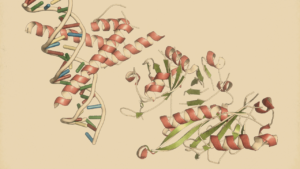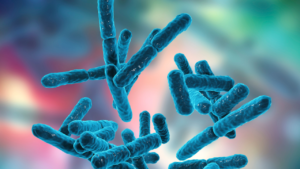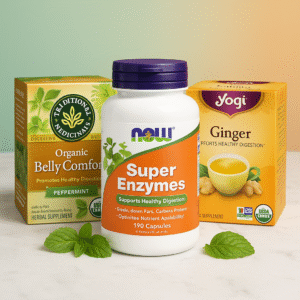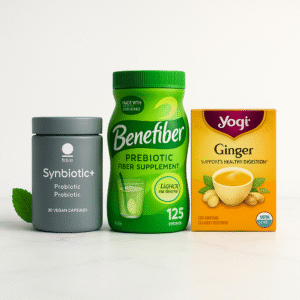5 Surprising Benefits of Dragon Fruit-Kiwi Fermented Beverage
Discover the health benefits and anti-aging properties of Dragon Fruit-Kiwi Fermented Beverage in our latest insightful article.
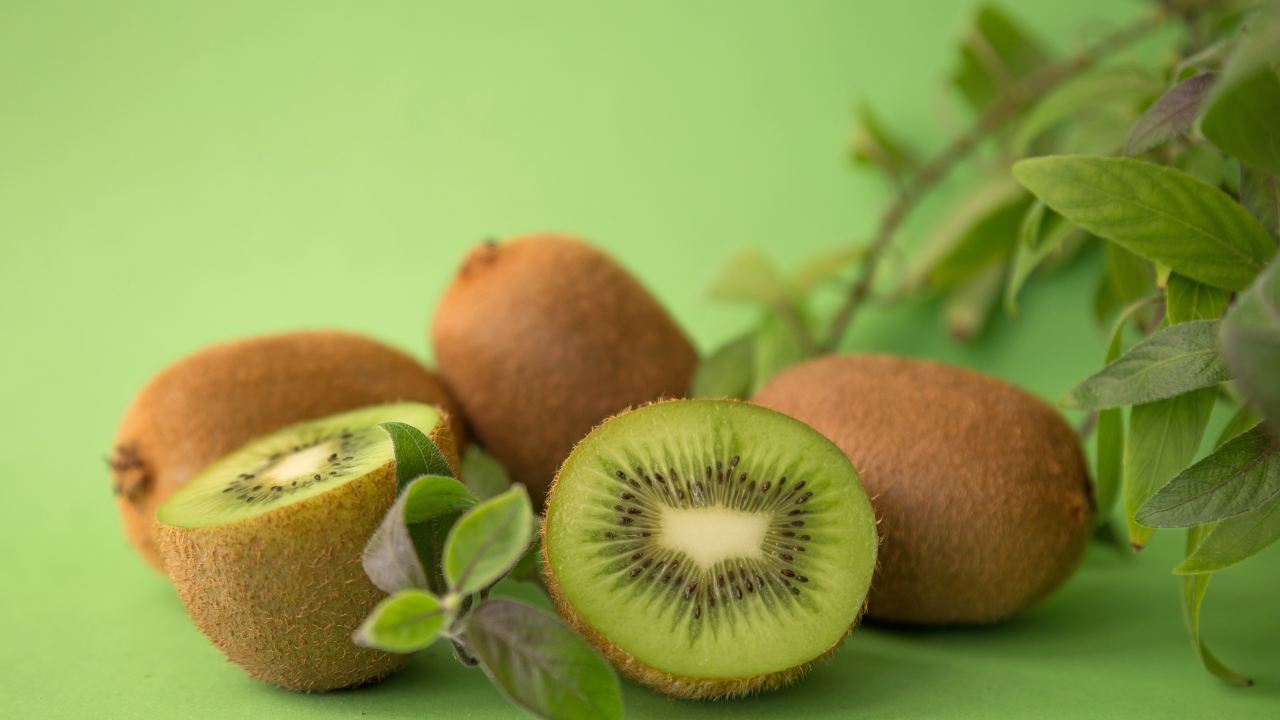
In the realm of functional foods, the dragon fruit-kiwi fermented beverage stands out for its remarkable health benefits.
This article delves into the five surprising advantages of this unique drink, emphasizing its potent antioxidant activity.
Rich in phenolic and flavonoid compounds, it not only offers fermented beverage health benefits but also plays a significant role in the aging process of Caenorhabditis elegans, a model organism in anti-aging research.
By exploring nutritional metabolomics and the effects of in vitro digestion, we uncover how this beverage is transforming the landscape of health-promoting foods.
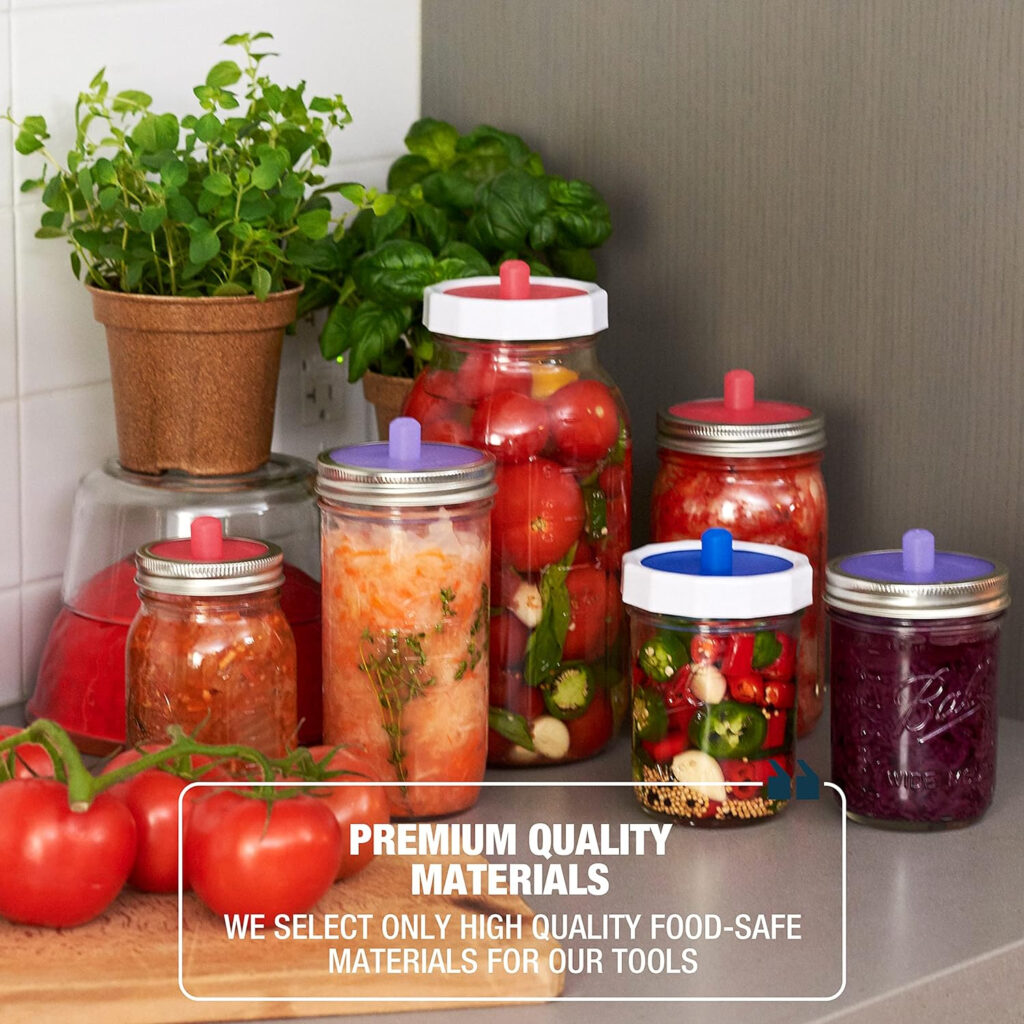
Main Findings
- The fermented beverage retained strong antioxidant activity after in vitro digestion.
- Post-fermentation, there was an increase in phenolic and flavonoid compounds.
- In the Caenorhabditis elegans model, the beverage extended lifespan.
- It also enhanced antioxidant enzyme activities in C. elegans.
- These results suggest potential anti-aging and health-promoting benefits.
What's the Buzz About?
Dragon Fruit-Kiwi Fermented Beverage: A Promising Anti-Aging Functional Drink
Aging, a natural process, involves a gradual decline in bodily functions.
One major contributor to aging is the accumulation of reactive oxygen species (ROS) in the body.
To combat this, the consumption of antioxidant-rich diets has gained attention.
Fruits and vegetables, known for their antioxidant properties, can boost the body's defense against ROS A Trusted Source
Song B, Zheng B, Li T, Liu R. Raspberry extract ameliorates oxidative stress in Caenorhabditis elegans via the SKN-1/Nrf2 pathway. J Funct Foods. (2020) 70:103977. doi: 10.1016/j.jff.2020.103977 CrossRef Full TextGoogle Scholar.
Research shows that diets high in antioxidants can reduce the risk of cardiovascular disease and cancer A Trusted Source
Septembre-Malaterre A, Remize F, Poucheret P. Fruits and vegetables, as a source of nutritional compounds and phytochemicals: changes in bioactive compounds during lactic fermentation. Food Res Int. (2018) 104:86–99. doi: 10.1016/j.foodres.2017.09.031 PubMed AbstractCrossRef Full TextGoogle Scholar.
However, these perishable foods present challenges in preservation.
Fermentation, a popular preservation method, not only extends their shelf life but also enhances their nutritional quality and taste A Trusted Source
Saarela M, Alakomi H, Mättö J, Ahonen A, Puhakka A, Tynkkynen S. Improving the storage stability of Bifidobacterium breve in low pH fruit juice. Int J Food Microbiol. (2011) 149:106–10. doi: 10.1016/j.ijfoodmicro.2010.12.002 PubMed AbstractCrossRef Full TextGoogle Scholar.
Fruit juices, such as pomegranate, orange, and pineapple, have been successfully fermented to create functional beverages A Trusted Source
Mantzourani I, Kazakos S, Terpou A, Alexopoulos A, Bezirtzoglou E, Bekatorou A, et al. Potential of the probiotic Lactobacillus Plantarum ATCC 14917 strain to produce functional fermented pomegranate juice. Foods. (2018) 8:4. doi: 10.3390/foods8010004 PubMed AbstractCrossRef Full TextGoogle Scholar A Trusted Source
Escudero-López B, Berná G, Ortega Á, Herrero-Martín G, Cerrillo I, Martín F, et al. Consumption of orange fermented beverage reduces cardiovascular risk factors in healthy mice. Food Chem Toxicol. (2015) 78:78–85. doi: 10.1016/j.fct.2015.02.006PubMed AbstractCrossRef Full TextGoogle Scholar A Trusted Source
Chanprasartsuk O, Prakitchaiwattana C, Sanguandeekul R, Fleet G. Autochthonous yeasts associated with mature pineapple fruits, freshly crushed juice and their ferments; and the chemical changes during natural fermentation. Bioresour Technol. (2010) 101:7500–9. doi: 10.1016/j.biortech.2010.04.047 PubMed AbstractCrossRef Full TextGoogle Scholar.
During fermentation, microorganisms like yeast and lactic acid bacteria (LAB) transform the nutrients and compounds in raw materials, imparting a unique flavor and sensory appeal A Trusted Source
Salehi F. Physicochemical characteristics and rheological behaviour of some fruit juices and their concentrates. J Food Meas Charact. (2020) 14:2472–88. doi: 10.1007/s11694-020-00495-0 CrossRef Full TextGoogle Scholar A Trusted Source
Mukisa I, Byaruhanga Y, Muyanja C, Langsrud T, Narvhus J. Production of organic flavor compounds by dominant lactic acid bacteria and yeasts from Obushera, a traditional sorghum malt fermented beverage. Food Sci Nutr. (2017) 5:702–12. doi: 10.1002/fsn3.450 PubMed AbstractCrossRef Full TextGoogle Scholar.
Probiotic functional beverages are gaining popularity due to their ability to deliver probiotics, making them suitable for lactose-intolerant individuals, those with high cholesterol, milk protein allergies, and vegetarians A Trusted Source
Camargo Prado F, De Dea Lindner J, Inaba J, Thomaz-Soccol V, Kaur Brar S, Soccol C. Development and evaluation of a fermented coconut water beverage with potential health benefits. J Funct Foods. (2015) 12:489–97. doi: 10.1016/j.jff.2014.12.020 CrossRef Full TextGoogle Scholar.
These fruit and vegetable juice-based beverages offer various health benefits, including antioxidant properties, improved gut flora regulation, and anti-inflammatory and anti-cancer effects A Trusted Source
Villarreal-Soto S, Beaufort S, Bouajila J, Souchard J, Renard T, Rollan S, et al. Impact of fermentation conditions on the production of bioactive compounds with anticancer, anti-inflammatory and antioxidant properties in kombucha tea extracts. Process Biochem. (2019) 83:44–54. doi: 10.1016/j.procbio.2019.05.004 CrossRef Full TextGoogle Scholar.
Their high content of ascorbic acid, polyphenols, and fermentable sugars makes them not only healthy but also delicious for all age groups A Trusted Source
Mantzourani I, Terpou A, Alexopoulos A, Bezirtzoglou E, Bekatorou A, Plessas S. Production of a potentially synbiotic fermented Cornelian cherry (Cornus mas L.) beverage using Lactobacillus paracasei K5 immobilized on wheat bran. Biocatal Agric Biotechnol. (2019) 17:347–51. doi: 10.1016/j.bcab.2018.12.021 CrossRef Full TextGoogle Scholar.
Dragon Food Fruit (Hylocereus spp.) is an environmentally friendly fruit packed with nutrients like sugar, protein, organic acids, vitamins, amino acids, and minerals A Trusted Source
Ferreres F, Grosso C, Gil-Izquierdo A, Valentão P, Mota A, Andrade P. Optimization of the recovery of high-value compounds from pitaya fruit by-products using microwave-assisted extraction. Food Chem. (2017) 230:463–74. doi: 10.1016/j.foodchem.2017.03.061 PubMed AbstractCrossRef Full TextGoogle Scholar.
It can be consumed fresh or processed into various products, all of which offer health benefits like cancer prevention, anti-inflammation, and cardiovascular protection A Trusted Source
Trivellini A, Lucchesini M, Ferrante A, Massa D, Orlando M, Incrocci L, et al. Pitaya, an attractive alternative crop for mediterranean region. Agronomy. (2020) 10:1065. doi: 10.3390/agronomy10081065 CrossRef Full TextGoogle Scholar.
Kiwi (Actinidia chinensis Planch.) is another fruit rich in phenolic compounds, triterpenoids, vitamins, dietary fiber, and trace elements A Trusted Source
He X, Fang J, Chen X, Zhao Z, Li Y, Meng Y, et al. Actinidia chinensis Planch.: a review of chemistry and pharmacology. Front Pharmacol. (2019) 10:1236. doi: 10.3389/fphar.2019.01236 PubMed AbstractCrossRef Full TextGoogle Scholar.
It can be turned into various products, known for its positive effects on digestion and appetite A Trusted Source
He X, Fang J, Chen X, Zhao Z, Li Y, Meng Y, et al. Actinidia chinensis Planch.: a review of chemistry and pharmacology. Front Pharmacol. (2019) 10:1236. doi: 10.3389/fphar.2019.01236 PubMed AbstractCrossRef Full TextGoogle Scholar.
Combining the fermentation of diverse fruits and vegetables enhances microbial nutrient utilization, affecting their growth and metabolism A Trusted Source
Angelov A, Gotcheva V, Kuncheva R, Hristozova T. Development of a new oat-based probiotic drink. Int J Food Microbiol. (2006) 112:75–80. doi: 10.1016/j.ijfoodmicro.2006.05.015 PubMed AbstractCrossRef Full TextGoogle Scholar.
Dragon food fruit and kiwi fruit, with their nutritional profiles, make excellent functional food ingredients.
To study aging, researchers often use Caenorhabditis elegans, a small, short-lived, and genetically well-characterized organism A Trusted Source
Shen P, Yue Y, Zheng J, Park Y. Caenorhabditis elegans: a convenient in vivo model for assessing the impact of food bioactive compounds on obesity, aging, and Alzheimer’s disease. Annu Rev Food Sci Technol. (2018) 9:1–22. doi: 10.1146/annurev-food-030117-012709 PubMed AbstractCrossRef Full TextGoogle Scholar.
C. elegans shares many genes with humans, making it a valuable model for studying the health benefits of food on chronic diseases A Trusted Source
Calvo D, Martorell P, Genovés S, Gosálbez L. Development of novel functional ingredients: need for testing systems and solutions with Caenorhabditis elegans. Trends Food Sci Technol. (2016) 54:197–203. doi: 10.1016/j.tifs.2016.05.006CrossRef Full TextGoogle Scholar.
While research on the antioxidant and anti-aging effects of fermented fruit and vegetable beverages on C. elegans is limited, similar studies with substances like orange juice
and plant sterol-enriched fruit beverages have shown promising results in combating oxidative stress and delaying aging in these organisms A Trusted Source
De Oliveira Caland R, Cadavid C, Carmona L, Peña L, De Paula Oliveira R. Pasteurized orange juice rich in carotenoids protects Caenorhabditis elegans against oxidative stress and β-amyloid toxicity through direct and indirect mechanisms. Oxid Med Cell Longev. (2019) 2019:5046280. doi: 10.1155/2019/5046280 PubMed AbstractCrossRef Full TextGoogle Scholar A Trusted Source
López-García G, Cilla A, Barberá R, Genovés S, Martorell P, Alegría A. Effect of plant sterol and galactooligosaccharides enriched beverages on oxidative stress and longevity in Caenorhabditis elegans. J Funct Foods. (2020) 65:103747. doi: 10.1016/j.jff.2019.103747 CrossRef Full TextGoogle Scholar.
Despite the known health benefits of fruit and vegetable-fermented beverages, there is limited information on those derived from dragon fruit and kiwi fruit.
This study aims to investigate how fermentation affects antioxidant capacity using non-targeted metabolomic techniques and assess its impact on the growth and stress resistance of C. elegans.
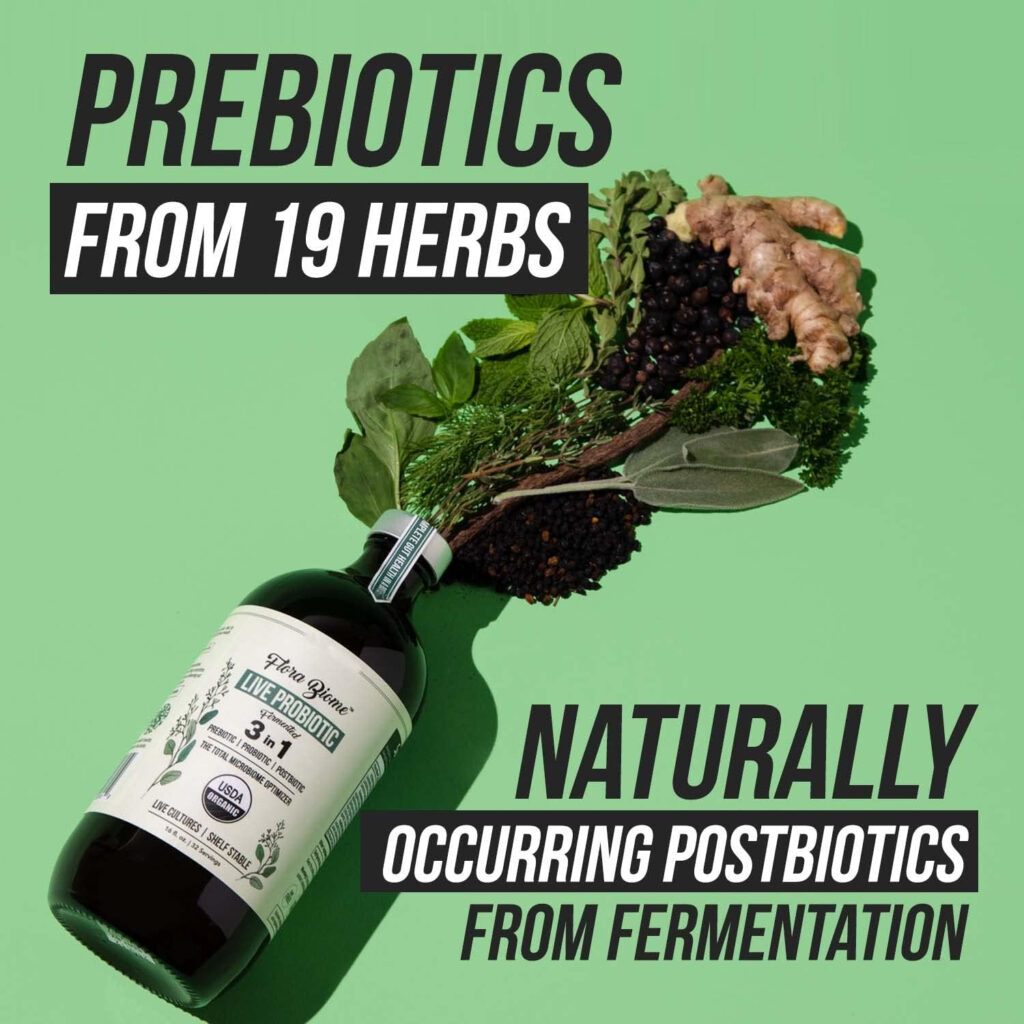
The findings will offer valuable insights into the functional evaluation of enzyme-rich foods, with a focus on dragon food fruit and kiwi-based fermented beverages, potentially making them a dietary supplement to combat oxidative stress and delay aging A Trusted Source
Amigoni L, Stuknytë M, Ciaramelli C, Magoni C, Bruni I, De Noni I, et al. Green coffee extract enhances oxidative stress resistance and delays aging in Caenorhabditis elegans. J Funct Foods. (2017) 33:297–306. doi: 10.1016/j.jff.2017.03.056 CrossRef Full TextGoogle Scholar.
Behind the Scenes
Preparing the Dragon Fruit-Kiwi Fermented Beverage
The journey of this beverage begins with the procurement of fresh dragon food fruit and kiwi from a local supermarket.
These fruits are cleaned and cut into small pieces for later use.
To create the mixed juice, 1 kilogram of these fruit pieces (in a 1:1 ratio of dragon fruit to kiwi) is blended with 3 liters of sterile water.
This blending process helps to homogenize the mixture and prepare it for fermentation.
High-Power Blender
This blender is ideal for those attempting to recreate the Dragon Fruit-Kiwi Fermented Beverage at home. It boasts a powerful motor and sharp, durable blades, ensuring a smooth blend of fibrous fruits. This is crucial for achieving the right texture and consistency for effective fermentation, enhancing the extraction of beneficial antioxidants and nutrients from the fruits.
Microorganism and Inoculum Preparation
The next step involves the introduction of lactic acid bacteria (LAB) and yeast into the juice.
These microorganisms, which were rigorously identified and verified for safety, play a crucial role in the fermentation process.
LAB, identified as Streptococcus thermophilus strain DR124, and yeast, known as Saccharomyces cerevisiae strain Y1, were cultivated in specific media.
LAB was grown in MRS (Man, Rogosa, and Sharpe) medium, while yeasts were cultivated in YPD (Extract Peptone Dextrose) medium.
The microorganisms were introduced into the juice when they reached specific concentrations (5 log CFU/mL for LAB and 7 log CFU/mL for yeast).
Home Fermentation Kit:
This kit simplifies the fermentation process, making it accessible for home enthusiasts. It includes all necessary tools and easy-to-follow instructions, mirroring the methods outlined in the article. This kit is perfect for experimenting with different fruit combinations and achieving the optimal environment for beneficial microorganisms to thrive, crucial for producing health-promoting fermented beverages.
Preparation of the Fermented Beverage
The heart of this beverage is formed by combining 3 liters of fruit juice with 0.84 kilograms of white sugar in a 5-liter glass bottle.
This mixture is homogenized and then pasteurized at 80°C for 5 minutes.
After sterilization, the juice is rapidly cooled with cold water.
To initiate fermentation, a 12% yeast inoculum is introduced, and the mixture is fermented at 30°C for 15 days.
Subsequently, a 6% LAB inoculum, consisting of Leuconostoc mesenteroides and Streptococcus thermophilus in a 1:1 ratio, is added, and fermentation continues at 37°C for 9 days.
The resulting enzyme solution is then subjected to centrifugation, and the supernatant is stored at -20°C for future use.
Analyzing Key Components
The health benefits of dragon fruit-kiwi fermented beverage are closely tied to its rich content of phenolic and flavonoid compounds, as well as its antioxidant activity.
The Total Phenolic Content (TPC) and Total Flavonoid Content (TFC) are measured using specific methods.
TPC is determined using the Folin-Ciocalteu method A Trusted Source
Mantzourani I, Terpou A, Alexopoulos A, Bezirtzoglou E, Bekatorou A, Plessas S. Production of a potentially synbiotic fermented Cornelian cherry (Cornus mas L.) beverage using Lactobacillus paracasei K5 immobilized on wheat bran. Biocatal Agric Biotechnol. (2019) 17:347–51. doi: 10.1016/j.bcab.2018.12.021 CrossRef Full TextGoogle Scholar, while TFC is measured using the Aluminum chloride colorimetric method A Trusted Source
Yan Y, Zhang F, Chai Z, Liu M, Battino M, Meng X. Mixed fermentation of blueberry pomace with L. rhamnosus GG and L. plantarum-1: enhance the active ingredient, antioxidant activity and health-promoting benefits. Food Chem Toxicol. (2019) 131:110541. doi: 10.1016/j.fct.2019.05.049 PubMed AbstractCrossRef Full TextGoogle Scholar.
These measurements help quantify the levels of gallic acid and rutin (in milligrams per 100 milliliters of the sample), respectively.
The antioxidant activity is assessed through various methods, including DPPH radical-scavenging, ABTS radical-scavenging, Hydroxyl radical-scavenging A Trusted Source
Zhao Z, Wu X, Chen H, Liu Y, Xiao Y, Chen H, et al. Evaluation of a strawberry fermented beverage with potential health benefits. PeerJ. (2021) 9:e11974. doi: 10.7717/peerj.11974 PubMed AbstractCrossRef Full TextGoogle Scholar, and Fe3+ reducing power assays A Trusted Source
Tang Z, Wang Y, Yang J, Xiao Y, Cai Y, Wan Y, et al. Isolation and identification of flavonoid-producing endophytic fungi from medicinal plant Conyza blinii H. Lév that exhibit higher antioxidant and antibacterial activities. PeerJ. (2020) 8:e8978. doi: 10.7717/peerj.8978 PubMed AbstractCrossRef Full TextGoogle Scholar.
Antioxidant Testing Kit:
This kit enables users to measure the antioxidant levels in their homemade beverages. It's particularly relevant for those interested in the health benefits discussed in the article, such as anti-aging and cancer prevention. The kit makes it easy to assess the Total Phenolic Content and Total Flavonoid Content, key indicators of antioxidant capacity.
Simulated In Vitro Gastrointestinal Digestion
To understand how Dragon Fruit-Kiwi Fermented Beverage interacts with the human digestive system, researchers conducted simulated in vitro gastrointestinal (GI) digestion experiments A Trusted Source
Hou F, Hu K, Gong Y, Xu J, Wu Y, Zhang M. Effects of in vitro simulated digestion on the flavonoid content and antioxidant activity of aged and fresh dried tangerine peel. J Food Process Preserv. (2018) 42:e13532. doi: 10.1111/jfpp.13532 CrossRef Full TextGoogle Scholar.
This involved replicating the conditions of the stomach and intestines to observe how the beverage's properties change during digestion.
In the gastric digestion phase, the beverage is mixed with simulated gastric fluid (SGF) at a 1:10 ratio.
SGF is prepared by dissolving NaCl and pepsin in distilled water and adjusting the pH to 2.
The mixture is incubated at 37°C for 2 hours, with samples taken at various time points for analysis.
In the intestinal digestion phase, the beverage is mixed with simulated intestinal fluid (SIF) at a 1:10 ratio.
SIF is prepared by dissolving KH2PO4 and trypsin in distilled water and adjusting the pH to 7.5.
Like the gastric phase, samples are taken during incubation for analysis.
Untargeted Metabolomics Analysis
To gain deeper insights into the beverage's composition, researchers employed untargeted metabolomics analysis.
Metabolites were extracted from the sample using methanol, and LC-MS (Liquid Chromatography-Mass Spectrometry) was used to analyze these compounds.
The data obtained were processed and compared with databases to identify metabolites and obtain quantitative results.
Assessing Antioxidant Activities In Vivo
Moving beyond the lab, researchers assessed the antioxidant activities of Dragon Fruit-Kiwi Fermented Beverage in vivo using Caenorhabditis elegans (C. elegans), a tiny worm often used in scientific research.
The study involved several aspects:
Culture and Treatment: C. elegans was cultured on a specific medium, and the worms were treated with different concentrations of the beverage A Trusted Source
Porta-de-la-Riva M, Fontrodona L, Villanueva A, Cerón J. Basic Caenorhabditis elegans methods: synchronization and observation. J Vis Exp. (2012) 64:e4019. doi: 10.3791/4019 PubMed AbstractCrossRef Full TextGoogle Scholar.
Assessment of Acute Toxicology: The study examined the toxicity of the beverage by exposing nematodes to various concentrations.
The survival rate of the nematodes was recorded A Trusted Source
Moliner C, Barros L, Dias M, López V, Langa E, Ferreira I, et al. Edible flowers of tagetes erecta l. As functional ingredients: phenolic composition, antioxidant and protective effects on Caenorhabditis elegans. Nutrients. (2018) 10:2002. doi: 10.3390/nu10122002 PubMed AbstractCrossRef Full TextGoogle Scholar.
Lifespan Assays: Researchers investigated the impact of the beverage on the lifespan of C. elegans.
The survival rate was monitored as the nematodes were exposed to different concentrations of the beverage.
Fertility Assay and Body Bending Frequency: The study also assessed the fertility of nematodes and observed their body bending frequency A Trusted Source
Wang Y, Luo S, Xu Z, Liu L, Feng S, Chen T, et al. The potential antioxidant ability of hydroxytyrosol on Caenorhabditis elegans against oxidative damage via the insulin signaling pathway. Arab J Chem. (2021) 14:103149. doi: 10.1016/j.arabjc.2021.103149 CrossRef Full TextGoogle Scholar.
Oxidative Stress and Heat Stress: Nematodes treated with the beverage were subjected to acute oxidative and heat stress, and the number of survivors was recorded.
Determination of Antioxidant Enzyme Activity and MDA Content: After treatment with the beverage, nematodes were used to measure antioxidant enzyme activity and Malondialdehyde (MDA) content.
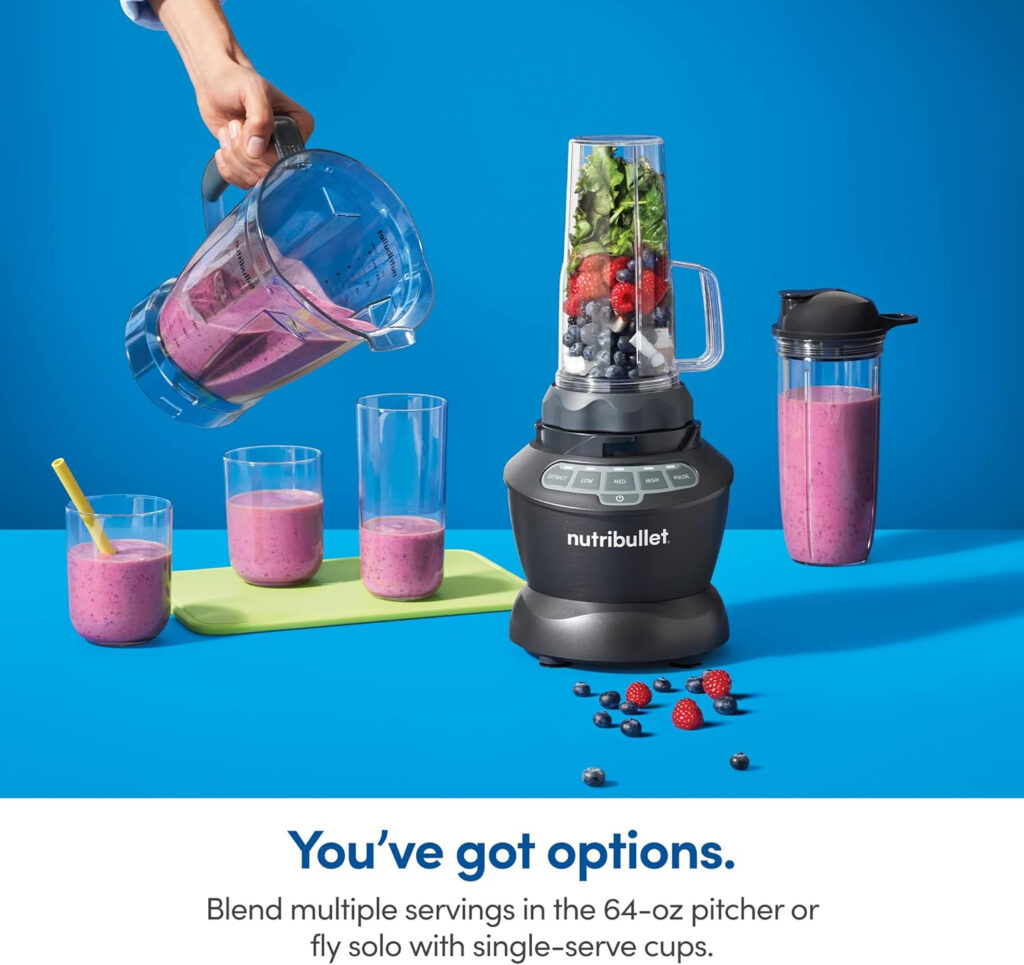
Statistical Analysis
Statistical analysis was carried out to evaluate the significance of the findings.
Analysis of variance (ANOVA) was employed, and various tools and databases were used to study metabolites and metabolic pathways.
Principal component analysis (PCA) and partial least squares discriminant analysis (PLS-DA) were utilized to assess metabolite importance.
Additionally, univariate analysis (t-test) was conducted to calculate statistical significance.
The criteria for identifying differential metabolites included VIP > 1, P < 0.05, and a fold change (FC) of ≥ 2 or ≤ 0.5.
Exciting Discoveries
Dragon Fruit-Kiwi Fermented Beverage: A Potent Antioxidant for Health and Longevity
Assessing Antioxidant Activity
Evaluation of the antioxidant activity of FB
To understand the health benefits of FB, it is crucial to assess its antioxidant activity.
However, there's no standardized method for evaluating the antioxidant properties of foods and beverages.
In this study, multiple methods were employed to comprehensively evaluate FB's antioxidant capacity.
The selected criteria included:
Total Phenolic Content (TPC): This measures the concentration of phenolic compounds, known for their antioxidant properties.
Total Flavonoid Content (TFC): Flavonoids are natural antioxidants found in plants, and TFC quantifies their presence.
Scavenging Abilities against three types of free radicals: DPPH, ABTS, and Hydroxyl radicals.
Fe3+ Reducing Power: This indicates the beverage's ability to reduce ferric ions, a measure of its antioxidant potential.
The results revealed FB's remarkable antioxidant potential, particularly in scavenging DPPH and Hydroxyl radicals, where it reached an impressive 90%.
This reflects FB's ability to inhibit free radicals effectively.
Gastrointestinal Digestion and Antioxidant Activity
Simulated in vitro gastrointestinal (GI) digestion
While FB exhibited exceptional antioxidant capacity, a critical question remained: Would it maintain this activity after digestion and absorption within the body?
To address this, FB underwent simulated in vitro gastrointestinal digestion, mimicking the conditions it would encounter in our bodies.
Effect on TPC and TFC during Digestion
During gastric digestion, both the digestion group and the control group of FB showed an upward trend in TPC and TFC over time.
The presence of an acidic environment in the stomach released phenolic substances bound within FB, contributing to increased TPC and TFC.
Interestingly, TFC remained stable, indicating that flavonoids in FB are resilient to changes in pH and pepsin levels.
In the intestinal digestion stage, alkaline conditions had minimal impact on TPC, but trypsin significantly affected it.
The TPC increased over time, suggesting that trypsin promoted the release of phenolic compounds bound to the matrix, outweighing the alkaline environment's potential degradation effects.
TFC also continued to rise in the intestinal digestion group, surpassing the gastric digestion group.
This stability in flavonoid content hinted at FB's robustness in preserving its antioxidants during digestion.
Effect on Antioxidant Activity during Digestion
Four different antioxidant experiments were conducted to study FB's antioxidant activity during gastric and intestinal digestion.
In the gastric digestion stage, FB demonstrated strong antioxidant capabilities in DPPH, ABTS, and Fe3+ reducing power assays.
Notably, the DPPH scavenging ability remained consistent at about 80%.
In contrast, during the intestinal digestion stage, FB exhibited even more potent antioxidant activity across all four experiments.
Its scavenging ability on hydroxyl and ABTS free radicals exceeded 80%, while Fe3+ reducing power increased.
This shift suggests that the transition from an acidic to an alkaline environment during digestion may enhance FB's antioxidant capacity.
Unlocking the Metabolomic Perspective
Data quality evaluation of untargeted metabolomics analysis
To gain deeper insights into FB's antioxidant potential, untargeted metabolomics analysis was employed to compare pre-fermentation (DKc) and post-fermentation (DKs) samples of FB.
Sample Quality Control
Quality control samples demonstrated high correlation, affirming the reliability of the data.
Principal Component Analysis (PCA) and Partial Least Squares Discrimination Analysis (PLS-DA)
PCA and PLS-DA revealed clear distinctions between DKc and DKs, underscoring significant changes in metabolite accumulation.
Differential Metabolites
The analysis identified 825 differentially abundant metabolites, including notable increases in phenols and flavonoids such as Riboflavin, Hesperetin, and Epigallocatechin.
These compounds play a pivotal role in enhancing FB's antioxidant capacity.
Metabolite Heatmaps
Heatmaps illustrated that the majority of metabolites exhibited increased content after fermentation, further highlighting the impact of the fermentation process on FB's antioxidant potential.
KEGG Pathway Analysis
Pathway enrichment analysis revealed 83 differential metabolic pathways, with the top five pathways encompassing the biosynthesis of plant hormones, tryptophan metabolism, taste transduction, microbial metabolism in diverse environments, and biosynthesis of alkaloids derived from the shikimate pathway.
These pathways contained essential compounds with various pharmacological activities, adding to FB's nutritional value.
C. elegans: A Model for Health and Longevity
To explore FB's potential impact on health and longevity, experiments were conducted using C. elegans as a model organism.
Evaluation of FB Acute Toxicity
FB was tested for acute toxicity, and results indicated its safety at lower concentrations.
At higher concentrations, a mild toxic effect was observed.
Extended Lifespan of C. elegans
Administration of FB at lower concentrations extended the lifespan of C. elegans by up to 18.01%.
This longevity-enhancing effect correlated with increased antioxidant compounds identified through metabolomic analysis.
Effect on Fertility and Motor Function
FB had no significant impact on nematode fertility or motor function, affirming its safety and lack of adverse effects.
Enhanced Antioxidant Enzyme Activity and Reduced MDA Content
FB increased superoxide dismutase (SOD) activity by 96.16% and decreased malondialdehyde (MDA) content by 40.62%.
These changes indicate FB's ability to enhance the nematodes' antioxidant defenses and reduce oxidative stress.
Improved Stress Resistance
FB also improved nematode survival rates under oxidative and heat stress conditions, highlighting its efficacy in enhancing resistance to external stressors.
Why It Matters
In this article, researchers have made a groundbreaking discovery with a fermented beverage derived from dragon food fruit and kiwi.
Their study delves into the beverage's robust antioxidant properties, which are not only preserved but enhanced through the process of fermentation.
The drink shows remarkable potential in promoting longevity and combating oxidative stress, as evidenced by its positive effects on the lifespan and resilience of the nematode Caenorhabditis elegans.
This finding opens up exciting possibilities for developing functional foods that support health and wellness.
Probiotic Supplements:
For readers interested in the probiotic benefits highlighted in the article but not keen on making their own fermented drinks, these supplements offer a convenient alternative. They contain a blend of beneficial bacteria, supporting gut health, and can complement the health benefits of the dragon fruit-kiwi fermented beverage.
Final Thoughts
In this study, a dragon fruit-kiwi fermented beverage (FB) was created through a two-step fermentation process involving yeast and lactic acid bacteria.
This unique beverage boasts impressive antioxidant capabilities, which remain stable even during simulated digestion.
The fermentation process significantly enhances the phenolic and flavonoid content of the beverage.
Notably, this FB, when consumed within safe limits, exhibits no adverse effects on Caenorhabditis elegans (nematodes).
Instead, it extends their lifespan and enhances survival under stress.
These findings highlight the potential health benefits of this novel functional beverage, bridging the gap in research on dragon food fruit and kiwi fermentation products.
Review date not set.
How we reviewed this article:
Latest on:
